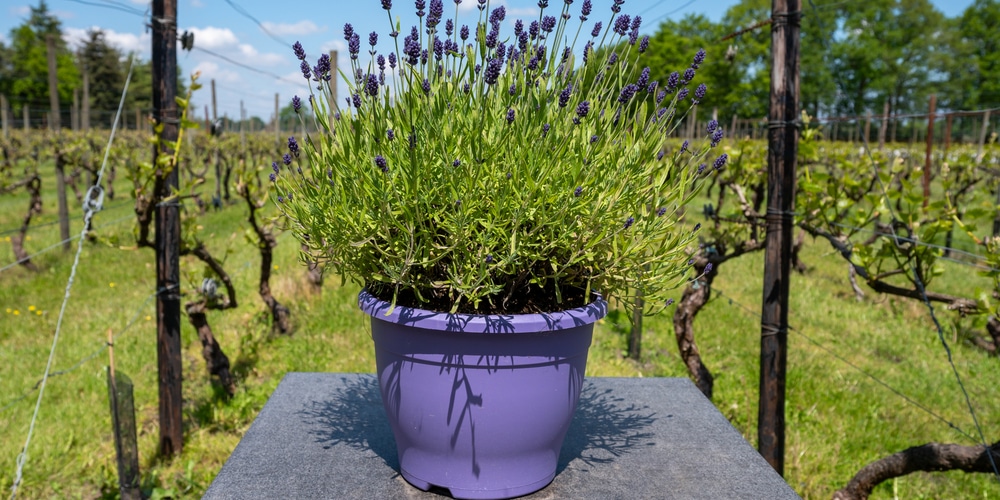There is no doubt about the fact that lavender is a stunning herb. It has all a gardener wants from a plant: attractive flowers, a pleasant scent, and it is relatively low-maintenance. However, it will only thrive in particular climates.
After all, these plants are native to the Mediterranean. So, lavender tends to have a low tolerance to cold temperatures. Still, this herb is suitable for growing in USDA hardiness zones between 5 and 9, where winters might display low temperatures.
But can lavender survive winter? And how can you prune your plant to encourage new growth in the spring? Learn this (and much more) in this essential guide!
Can Lavender Survive Winter?
If you live above USDA hardiness zone 5, you will probably be able to grow lavender as a perennial. However, keep in mind that some varieties are more cold-hardy than others.
For instance, if you live in a region with cold winters, you can choose to plant English lavender. Such species are hardy species and will be able to overwinter outdoors, even without much protection.
On the other hand, Spanish Lavender will only survive winter in USDA zone 8 and above.
Still, you can try your luck and grow them in colder regions. But, depending on where you live, you might have to take measures to protect these herbs from thermal shock.
So, overall, lavender can survive winter but will do so at different degrees depending on the variety. Luckily, lavender is a plant that performs well in containers, which will allow you to move your plant indoors if the temperatures fall too low.
Frost is usually the most common reason that lavenders might not survive winter. Other causes include inadequate (or inexistent) pruning or too cold soil. Jump to the following sections to learn more about preventing winter damage.
How to Prune your Lavender for Winter
While many people skip this step, pruning is essential for the health of most plants. Indeed, it is not only a way to maintain your plants in an attractive shape.
For instance, pruning your lavender in early spring or late summer every year can help your plant survive winter and maintain good health. Indeed, the practice encourages new growth and limits cold damage.
Think of it this way: pruning results in less surface area exposed, making the wood more resilient and less prone to splitting in the winter.
For best results, prune your herb in the early spring. Avoid cutting your plant’s branches in the winter, as you might expose your lavender to unfavorable conditions.
Cut the woody parts of the plant (those with gray leaves, which will unlikely produce new growth). You can remove up to a third of the plant. Don’t forget to keep your lavender in a compact shape. Doing so will prevent snow from getting into the plant and minimize winter damage.
How to Better Overwinter Your Lavender
First of all, we recommend you choose a variety of lavender suitable for your climate. For instance, go for a species with higher resistance to cold temperatures if you live in a region where winters can get extreme.
Don’t forget to reduce the watering frequency over the winter. Lavender goes into dormancy and doesn’t need as many nutrients in this phase. After all, overwatering might cause severe issues, such as root rot and fungal infections.
Despite being dormant, lavender will still need plenty of sunlight, even during the winter. If you decide to move your plant indoors, don’t forget to place it somewhere it will receive the amount of lighting it needs.
Can lavender survive winter: Conclusion
During the winter, your lavender might look sad. But don’t take that as a signal to fertilize it: it will do more harm than good! Indeed, a build-up of nutrients in the soil (when the plant doesn’t need them) might become toxic over time.
Related Article: How Long Does It Take to Grow Lavender From Cuttings?


